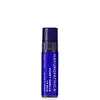What's inside
What's inside
 Key Ingredients
Key Ingredients

No key ingredients
 Benefits
Benefits

 Concerns
Concerns

 Ingredients Side-by-side
Ingredients Side-by-side

Octyldodecanol
EmollientC10-18 Triglycerides
EmollientButyrospermum Parkii Butter
Skin ConditioningHydrogenated Castor Oil
EmollientEuphorbia Cerifera Wax
Hydrogenated Coco-Glycerides
EmollientCera Alba
EmollientC18-36 Acid Glycol Ester
EmollientC18-36 Acid Triglyceride
EmollientSimmondsia Chinensis Seed Oil
EmollientSucrose Tetrastearate Triacetate
EmollientTocopheryl Acetate
AntioxidantParfum
MaskingBenzyl Benzoate
AntimicrobialAlpha-Isomethyl Ionone
PerfumingOctyldodecanol, C10-18 Triglycerides, Butyrospermum Parkii Butter, Hydrogenated Castor Oil, Euphorbia Cerifera Wax, Hydrogenated Coco-Glycerides, Cera Alba, C18-36 Acid Glycol Ester, C18-36 Acid Triglyceride, Simmondsia Chinensis Seed Oil, Sucrose Tetrastearate Triacetate, Tocopheryl Acetate, Parfum, Benzyl Benzoate, Alpha-Isomethyl Ionone
Olea Europaea Fruit Oil
MaskingCera Alba
EmollientHoney
HumectantOctyldodecanol
EmollientIrvingia Gabonensis Kernel Butter
Skin ConditioningHydrogenated Coco-Glycerides
EmollientButyrospermum Parkii Butter
Skin ConditioningCitrus Reticulata Peel Oil
MaskingVanilla Planifolia Fruit Extract
Skin ConditioningCitrus Aurantium Dulcis Peel Wax
Skin ConditioningCitrus Sinensis Peel Oil Expressed
PerfumingRosmarinus Officinalis Leaf Extract
AntimicrobialOlea Europaea Fruit Oil, Cera Alba, Honey, Octyldodecanol, Irvingia Gabonensis Kernel Butter, Hydrogenated Coco-Glycerides, Butyrospermum Parkii Butter, Citrus Reticulata Peel Oil, Vanilla Planifolia Fruit Extract, Citrus Aurantium Dulcis Peel Wax, Citrus Sinensis Peel Oil Expressed, Rosmarinus Officinalis Leaf Extract
Ingredients Explained
These ingredients are found in both products.
Ingredients higher up in an ingredient list are typically present in a larger amount.
This ingredient is also known as shea butter. It is an effective skin hydrator and emollient.
Emollients help soothe and soften your skin. It does this by creating a protective film on your skin. This barrier helps trap moisture and keeps your skin hydrated. Emollients may be effective at treating dry or itchy skin.
Shea butter is rich in antioxidants. Antioxidants help fight free-radicals, or molecules that may harm the body. It is also full of fatty acids including stearic acid and linoleic acid. These acids help replenish the skin and keep skin moisturized.
While Shea Butter has an SPF rating of about 3-4, it is not a sunscreen replacement.
Shea butter may not be fungal acne safe. We recommend speaking with a professional if you have any concerns.
Learn more about Butyrospermum Parkii ButterCera alba is beeswax, or the wax used by bees to make honeycombs. It is a texture-enhancer and emollient. A study from 2003 found beeswax to be a stronger emollient than ingredients such as petroleum jelly.
As an emollient, beeswax helps hydrate the skin by creating a barrier on top. This barrier traps moisture in.
Emulsifiers help prevent ingredients from separating. This helps create consistent texture.
The structure of beeswax is mainly long-chain alcohols and the esters of fatty acids.
There are three types of beeswax: yellow, white, and absolute. Yellow is pure beeswax taken from the honeycomb. White beeswax is created by filtering or bleaching yellow beeswax. Absolute beeswax is created by treating beeswax with alcohol. Beeswax used in cosmetics are purified.
Beeswax has been used throughout history and even in prehistoric times. Some common uses for beeswax still used today are making candles, as a waterproofing agent, and polish for leather.
Learn more about Cera AlbaHydrogenated Coco-Glycerides isn't fungal acne safe.
Octyldodecanol is a fatty alcohol. It is primarily used to enhance the texture of products.
As an emulsifier, Octyldodecanol helps prevent the oils and waters from separating. It also prevents ingredients from creating foam when shaken.
Octyldodecanol is created by reducing fatty acid to an alcohol.
Due to its high molecular weight, it does not get absorbed into the skin.
Learn more about Octyldodecanol